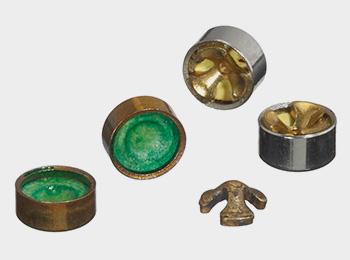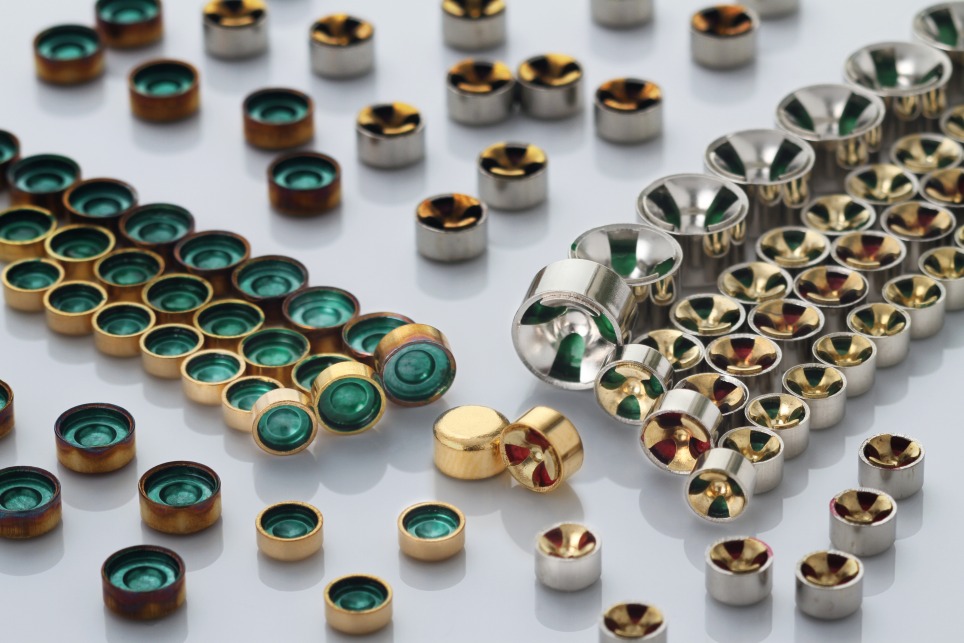The Single Strategy To Use For Remington Primers
Wiki Article
Some Of Cci Primers
Table of Contents7 Simple Techniques For Primers In StockRifle Primers for BeginnersThe Ultimate Guide To Small Pistol PrimersThe Single Strategy To Use For Small Pistol PrimersSmall Pistol Primers Can Be Fun For Everyone
Part of the firearm cartridge for starting propellant combustion In guns as well as artillery, the primer () is the chemical and/or device responsible for launching the propellant combustion that will push the projectiles out of the weapon barrel. In very early black powder guns such as muzzleloaders, the guide was basically the same chemical as the major propellant (albeit normally in a finer-powdered kind), however put right into an external flash pan, where it could be stired up by an ignition resource such as a slow-moving suit or a flintlock though some muzzleloaders have primers like cap weapon caps. reloading primers.
In artillery the primers are often a separate element, put inside the barrel to the back of the major propellant chargebut there are other examples of guns, including for instance some automated tools, designed to shoot cartridges with important electrical guides.
Some Known Incorrect Statements About Small Pistol Primers

With the arrival of hand-held firearms, this became an unfavorable way of firing a gun. Holding a burning stick while trying to put a cost of black powder very carefully down a barrel is hazardous, and attempting to hold the gun with one hand while at the same time intending at the target and looking for the touchhole makes it extremely tough to fire accurately. The initial effort to make the process of shooting a small arm easier was the "matchlock".
The match was a slow-burning fuse constructed from plant fibers that were taken in an option of nitrates, charcoal, and also sulfur, and dried out (https://www.storeboard.com/reloadingprimers). This "slow-match" was sparked prior to the gun was needed, and also it would gradually burn, maintaining a warm coal at the burning end. After the gun was filled and also the touchhole keyed with powder, the burning tip of the match was placed to ensure that the lock would certainly bring it right into call with the touchhole.
The Main Principles Of Winchester Primers
This brought the suit to the touchhole, sparking the powder. With cautious attention, the slow-burning suit might be maintained burning for extended periods of time, and using the lock system made relatively exact fire possible. The following transformation in ignition modern technology was the "wheel-lock". It used a spring-loaded, serrated wheel which massaged versus a piece of iron pyrite, comparable to a modern-day lighter.

The covered flashpan likewise offered some ability to withstand negative climate. The wheel-lock delighted in just a brief period of popularity before being superseded by a simpler, extra robust layout.
Some Ideas on Small Pistol Primers You Should Know
The flint was held in a spring-loaded arm, called the "cock" from the similarity of its movement to a pecking poultry. The penis rotated via approximately a 90-degree arc and also was held in the tensioned, or "cocked" position by a trigger.The "half-cock" setting held the penis midway back, as well as utilized a deep notch to make sure that shooting would certainly not launch the cock. Half-cock was a safety and security setting, used when filling, storing or bring a packed flintlock. The "full-cock" setting held the penis right back and also was the position where the weapon was terminated.
It acted as both a flashpan cover and a steel striking surface for the flint. The frizzen was hinged and also spring-loaded to ensure that it would secure the open or shut placement. When shut, the striking surface was positioned so that the flint would strike at the correct angle to create a spark.
Some Known Incorrect Statements About Primers In Stock
The flintlock system was easier as well as more powerful than the wheel-lock, as well as the flint and steel provided an excellent, dependable source of ignition. The flintlock continued to be in armed forces solution for over 200 years, and also flintlocks are still made today for historic re-enactments and also muzzle-loading target competition, and also for hunters that delight in the added obstacle that the flintlock offers.By the middle of the 19th century, the percussion or caplock system was well developed., as it was simpler as well as extra trustworthy than the flintlock.
The flashpan as well as frizzen were gotten rid of and also replaced by a little, hollow horizontal cyndrical tube (drum) screwed into the bored-out as well as touched flash opening and also lugging a "nipple" over which the cap might be fitted. A "hammer" which also had half-cock (for filling and using the cap) and full-cock settings changed the dick.
Report this wiki page